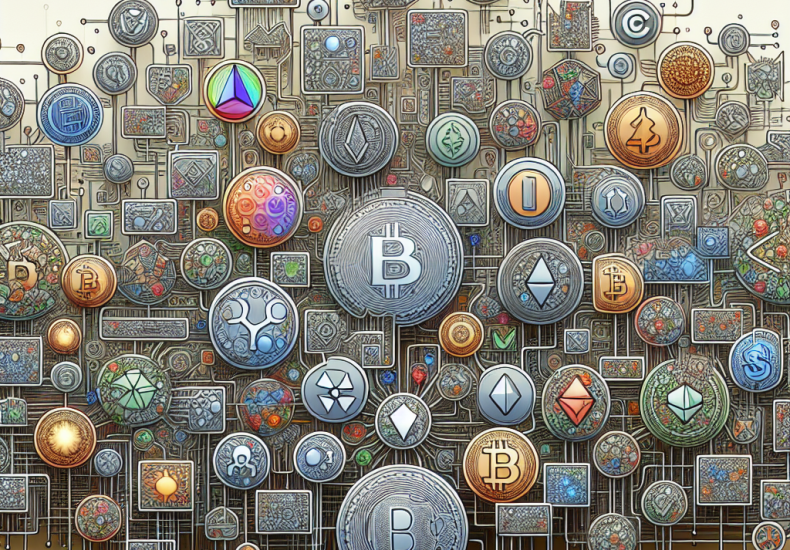
Understanding Crypto Tokens: Their Functionality and Significance
Built on an existing blockchain, a crypto token symbolizes an asset or interest that has undergone the process of tokenization. Although they share multiple characteristics with cryptocurrencies, the asset natively belonging to a blockchain is the cryptocurrency itself.
The process known as an initial coin offering (ICO) aligns crypto tokens with crowdfunding, where they are typically minted, distributed, and circulated to fund various projects. These tokens not only serve as a means to raise capital but also represent investments, can store value, and facilitate purchases.
In essence, cryptocurrencies enable transactions by serving as digital representations of value, utilizing blockchain technology for executing payments. Through ICOs, crypto tokens are commonly acquired to support project development.
Before the ICO wave of 2017, Bitcoin and Ethereum had already seen forks giving birth to other cryptocurrencies, with Mastercoin being the first well-known token. Announced in January 2012 by J.R. Willet on Bitcoin Forum, the whitepaper titled “The Second Bitcoin Whitepaper” laid its foundation.
Mastercoin pioneered using layers to extend a cryptocurrency’s capabilities. Tying Mastercoin’s value to Bitcoin, the project outlined its plan to finance developers, enabling users to generate new coins from their existing Mastercoins.
The ICO Explosion
Token issuance and ICO activities accelerated between 2012 and 2016, culminating in 2017 when token offerings surged dramatically as they garnered attention for potential profit opportunities. This rise attracted developers, businesses, and unfortunately, scammers, prompting regulatory bodies to caution investors regarding ICO-related risks.
Despite the prevalence of scams, numerous crypto tokens and ICOs serve legitimate purposes, aiming to raise funds for startups or project development.
After the ICO Bubble
The ICO frenzy subsided in 2018, giving way to initial exchange offerings (IEOs) where exchanges facilitated token sales, claiming to vet offerings for lessened investor risk. However, some scammers exploited exchanges to promote fraudulent activities.
Regulatory authorities warned investors about IEO risks and advised exchanges facilitating such fundraising to register with relevant authorities, considering potential designation as alternative trading systems or broker/dealers as per legal requirements.
ICOs continue as a fundraising mechanism, with whitepapers resembling pitchbooks outlining the token’s purpose, sales plan, fund allocation, and investor benefits.
Given scammers have misused tokens to defraud investors, distinguishing between legitimate and deceptive endeavors is crucial. Indicators to assess a token’s credibility include verifying the team behind the ICO, checking their business legitimacy through addresses, phone numbers, and state registration searches.
Tokens from outside the U.S., such as BananaCoin intended for banana plantation funding in Laos, pose research challenges. Tokens not listed on regulated exchanges present higher scam risks, although scams are possible even on reputable platforms.
Fast Fact
A smart contract automates transactions via self-executing code, executing agreements between parties upon meeting specified conditions.
Examples of utility include tokens tallying customer loyalty points or enabling streaming content access. They can also mirror cryptocurrencies, with tokens on a blockchain equating to a specific Bitcoin quantity. These tokens are exchangeable among blockchain participants.
Reasons for holding crypto tokens include investment representation and performing transactions. The SEC in the United States mandates token registration unless exempt, recognizing them as securities. Similar due diligence to stock investments is advisable when engaging with cryptocurrencies.
Misperceptions often equate “crypto token” with “cryptocurrency,” yet they differ. Cryptocurrencies function for payments, while tokens denote asset interest or transaction facilitation on blockchains. Tokens undergo ICOs transitioning to broader blockchain use.
Tokens facilitate blockchain transactions and can denote ownership stakes akin to securities but are not legal tender. Like stocks, they enable trades for profit.
Bitcoin, a cryptocurrency or coin, functions for trades, value storage, and purchases, distinguishing it from tokens.
The primary distinction between crypto coins and tokens lies in independent blockchains. Coins operate as currency, while tokens represent assets or facilitate blockchain transactions.
Diverse blockchain tokens exist, encompassing reward, utility, security, governance, and asset categories.
You may also like

Peak of Cryptocurrency Market Control: Bitcoin’s New Heights

The Evolution of Bitcoin Through Noteworthy Forks

Archives
Categories
- Blockchain Technology
- Cryptocurrency
- Cryptocurrency Analysis
- Cryptocurrency Custody
- Cryptocurrency ETFs
- Cryptocurrency Investing
- Cryptocurrency Investments
- Cryptocurrency Payments
- Cryptocurrency Psychology
- Cryptocurrency Regulation
- Cryptocurrency Trading
- Cryptocurrency Trading Platforms
- Cryptography
- Cybersecurity
- Economics
- Healthcare Technology
- Insurance
- Investing
- Real Estate Law
- Retirement Planning
- Technology Supply Chain